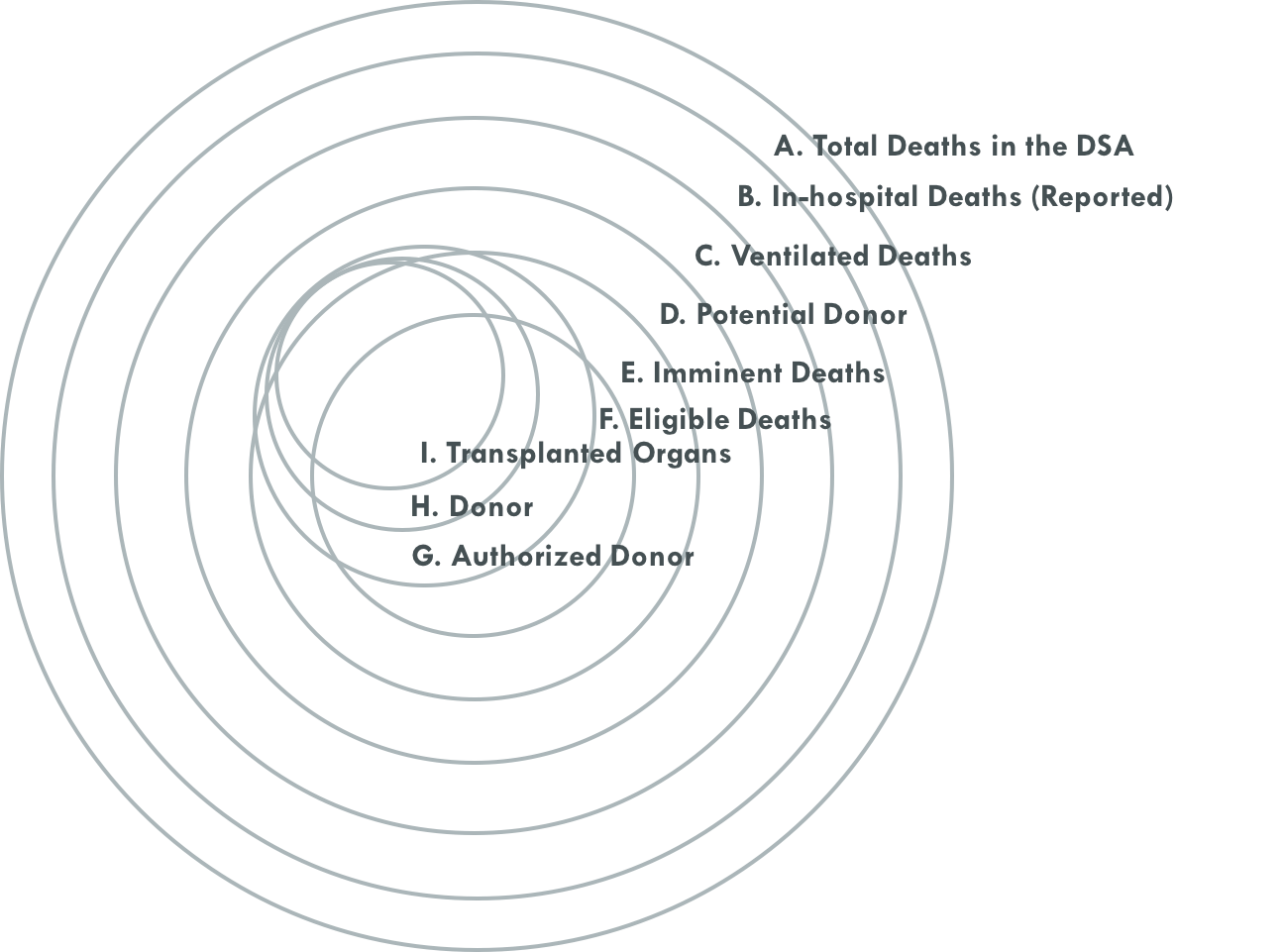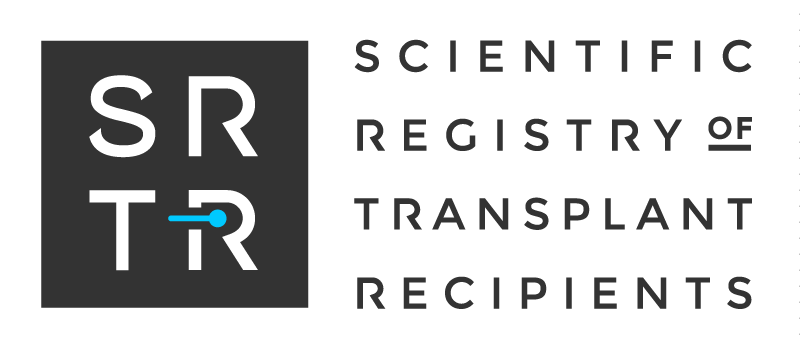Guide to Key OPO Metrics
Understanding and using OPO data
SRTR provides a great deal of information about each of the 56* organ procurement organizations (OPOs) and their donation service areas (DSA) in the US. The data and metrics cover key aspects of the donation process, including deaths within the DSA, deaths meeting standardized definitions of "eligible" or "imminent" deaths, how often deceased individuals become donors, and how many organs are successfully placed for transplant. This guide will help you better understand and interpret these metrics. Additionally, this video about OPO Performance Measuring provides more information.
Measuring the Donation Process
The process of getting from a death to a successful donation and subsequent transplant of the donor's organs is complex and requires many steps. While the figure to the right is arguably over-simplified, it helps us think about the steps in the process, some of which serve as the basis for some of the OPO metrics that SRTR produces. We visualize the donation process going through the following steps:
| Circle | Description |
| A. Total deaths in the DSA | The donation process ultimately begins with a death occurring within the OPO's DSA. |
| B. In-hospital death (reported) | For a deceased donor to result from a death, the death must occur in a hospital so measures can be taken to keep the potential donor's organs viable for transplant. Deaths that occur in the home or otherwise outside of the hospital generally do not present viable options for organ donation. We designate in-hospital deaths as "reported" to indicate that they are reported by the hospital to the local OPO. |
| C. Ventilated deaths | In addition to the death occurring in a hospital, the deceased individual must be ventilated such that the organs can continue to be supplied with oxygen to keep them viable for donation. |
| D. Potential donor | Only the subset of in-hospital ventilated deaths are suitable for organ donation due to many underlying medical factors or trauma to the organs. |
| E. Imminent deaths | Imminent deaths are a subset of potential donors for whom brain death has not been declared, but the patient shows signs consistent with brain death. |
| F. Eligible deaths | Eligible deaths represent patients who have been declared brain dead in accordance with state and local laws and have no exclusionary criteria as defined in current OPTN Policy. |
| G. Authorized donor | Authorized Donors are deaths that are deemed suitable for donation in which the deceased individual has provided first-person authorization (through, for example, a donor designation on his/her driver's license or registration through the National Donor Registry maintained by Donate Life America), or whose next of kin have authorized the donation to take place. Note that not all authorized donors necessarily meet the eligible death definition; for example, donors after circulatory determination of death (DCD donors) are not considered eligible donors because they have not necessarily been declared brain dead per state and local law. |
| H. Donor | In the context of the SRTR metrics, a donor is typically defined as an authorized donor from whom at least one organ (heart, intestine, kidney, liver, lung, or pancreas) was procured for the purpose of transplant. Not all authorized donors become actual donors due to complications that arise during the process or medical findings made during the donation procedure that preclude donation, such as active cancer. |
| I. Transplanted organ(s) | Finally, only a subset of donors actually have at least one organ transplanted into a recipient. Organs may be discarded due to inability to find a suitable recipient or other logistic constraints that prevent successful transplant. |

What donor conversions and yields mean
* As of 1/1/2023, The Living Legacy Foundation of Maryland and Washington Regional Transplant Community have merged. OPO-specific reports (OSRs) will reflect this change beginning with the Spring 2023 OSRs (July, 2023).
